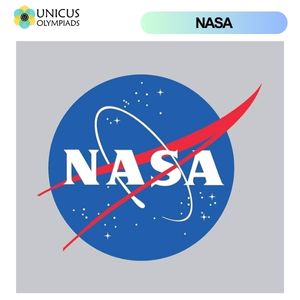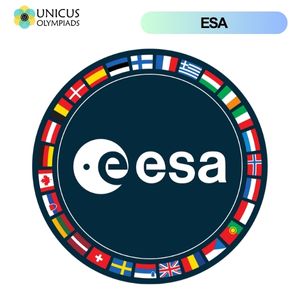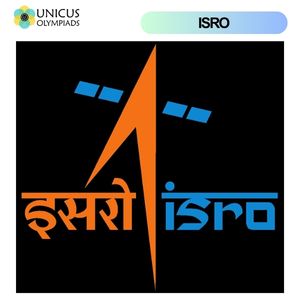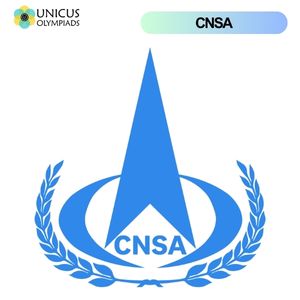What Roles Do Space Agencies Like NASA, ESA, ISRO, CNSA, and JAXA Play?
Space agencies around the world have played a crucial role in advancing humanity's understanding of the universe, improving technological capabilities, and fostering international collaboration in space exploration. Among the most prominent agencies are NASA (National Aeronautics and Space Administration), ESA (European Space Agency), ISRO (Indian Space Research Organisation), CNSA (China National Space Administration), and JAXA (Japan Aerospace Exploration Agency). Each of these agencies has its own set of goals, missions, and contributions to space science, and together, they are shaping the future of space exploration and technology. This article explores the roles of these agencies, their achievements, and their impact on global space exploration.
1. NASA (National Aeronautics and Space Administration)
NASA is the United States government agency responsible for space exploration, aeronautics, and scientific discovery. Established in 1958, NASA has been a leader in space exploration and has made significant contributions to our understanding of space and Earth sciences. NASA's missions include human space exploration, planetary science, astrophysics, and Earth observation.

1.1 Key Roles and Contributions
NASA plays a pivotal role in a variety of space-related endeavors:
- Human Space Exploration: NASA is known for its historic space missions, such as the Apollo program, which successfully landed astronauts on the Moon in 1969. NASA continues to lead efforts in human spaceflight, including the International Space Station (ISS) program and the upcoming Artemis mission, which aims to return astronauts to the Moon by 2024 and establish a sustainable presence on the lunar surface.
- Planetary Science: NASA has sent numerous probes and rovers to explore planets and moons in our solar system. Key missions include the Mars rovers (Curiosity, Perseverance), the Voyager probes, and the New Horizons mission to Pluto. NASA's research has provided invaluable insights into the formation and evolution of planets and the potential for life beyond Earth.
- Astronomy and Astrophysics: NASA operates several space telescopes, such as the Hubble Space Telescope and the James Webb Space Telescope, which provide unprecedented views of distant galaxies, stars, and planets. These telescopes have advanced our understanding of the universe's origins, the nature of black holes, and the search for exoplanets.
- Earth Observation: NASA's Earth science missions focus on understanding climate change, weather patterns, and natural disasters. NASA satellites monitor Earth’s atmosphere, oceans, and landmasses, providing critical data to improve disaster response, agriculture, and environmental management.
1.2 Notable Achievements
- The Moon Landing (1969): NASA's Apollo 11 mission was the first successful manned mission to land on the Moon. Neil Armstrong and Buzz Aldrin made history by walking on the lunar surface and collecting samples.
- Mars Rovers: NASA's Curiosity and Perseverance rovers have provided groundbreaking data on the Red Planet, including evidence of ancient water flows and potential signs of past microbial life.
- Hubble Space Telescope: Hubble’s images have revolutionized our understanding of the cosmos, providing insights into galaxy formation, the expansion of the universe, and the discovery of exoplanets.
2. ESA (European Space Agency)
The European Space Agency (ESA) is an intergovernmental organization dedicated to space exploration and research. Established in 1975, ESA represents 22 member states across Europe and collaborates closely with other space agencies, including NASA, to carry out missions related to Earth observation, planetary exploration, and space science.

2.1 Key Roles and Contributions
ESA’s primary objectives include scientific exploration, Earth observation, and technological development:
- Space Science: ESA’s space science missions focus on understanding the universe through telescopes and space probes. Notable missions include the Rosetta mission, which successfully landed a probe on a comet in 2014, and the Gaia mission, which is mapping the stars in our galaxy.
- Earth Observation: ESA operates the Copernicus program, which uses satellites to monitor Earth’s climate, oceans, and landmasses. This data helps scientists understand climate change and natural disasters and supports European environmental policies.
- International Collaboration: ESA collaborates extensively with NASA, Russia’s Roscosmos, and other space agencies. For example, ESA is a key partner in the ISS program and has provided essential components, such as the Automated Transfer Vehicle (ATV) for cargo resupply missions to the space station.
2.2 Notable Achievements
- Rosetta Mission: In 2014, ESA’s Rosetta spacecraft successfully landed a probe on the surface of comet 67P/Churyumov–Gerasimenko. This was the first time in history that a spacecraft had successfully landed on a comet.
- ExoMars Mission: A collaboration with Russia, the ExoMars mission aims to search for signs of past life on Mars. The Trace Gas Orbiter, launched in 2016, is studying the Martian atmosphere and looking for methane, a potential indicator of life.
3. ISRO (Indian Space Research Organisation)
The Indian Space Research Organisation (ISRO) is India’s national space agency, founded in 1969. ISRO has become one of the world’s most successful and cost-effective space agencies, known for its innovative approach to space exploration, satellite launches, and interplanetary missions.

3.1 Key Roles and Contributions
ISRO’s mission is to harness space technology for national development while pursuing space exploration. Some key areas of focus include:
- Satellite Launches: ISRO has successfully launched numerous satellites for communication, weather monitoring, and navigation, including the highly successful Indian National Satellite System (INSAT) and the Indian Remote Sensing (IRS) satellites.
- Mars Orbiter Mission (Mangalyaan): In 2013, ISRO became the first Asian country to reach Mars orbit, with the successful launch of the Mars Orbiter Mission (Mangalyaan). The mission made India the fourth country to reach Mars, and it was accomplished at a fraction of the cost of similar missions by other countries.
- Chandrayaan Missions: ISRO’s Chandrayaan missions aim to explore the Moon. Chandrayaan-1, launched in 2008, provided critical data about the presence of water on the lunar surface. Chandrayaan-2, launched in 2019, aimed to land near the Moon’s south pole, though the lander lost communication shortly before landing.
3.2 Notable Achievements
- Mars Orbiter Mission (Mangalyaan): The mission was a significant achievement, not only because of its scientific success but also due to the fact that it was completed with a remarkably low budget, showcasing ISRO’s cost-effective approach to space exploration.
- Chandrayaan-1: Chandrayaan-1 provided groundbreaking data on water molecules on the Moon, which led to significant advances in lunar exploration.
4. CNSA (China National Space Administration)
The China National Space Administration (CNSA) is China’s national space agency, responsible for space exploration, satellite launches, and manned missions. Since its establishment in 1993, CNSA has made remarkable progress in space technology and exploration, positioning China as a global space power.

4.1 Key Roles and Contributions
CNSA’s major contributions to space exploration include:
- Human Spaceflight: China has established a manned space program, with the first crewed mission, Shenzhou 5, launched in 2003. CNSA continues to develop its space station, the Tiangong (Heavenly Palace), which is set to be fully operational by 2022.
- Lunar Exploration: China has become a leader in lunar exploration, with the Chang’e missions. Chang’e 3, launched in 2013, successfully landed a rover on the Moon, and Chang’e 4, launched in 2018, made history by landing on the far side of the Moon.
- Mars Exploration: In 2021, China successfully launched the Tianwen-1 mission to Mars, which included both an orbiter and a rover. The Zhurong rover successfully landed on Mars, making China the third country to land a rover on the Red Planet.
4.2 Notable Achievements
- Shenzhou Missions: China’s manned space program has successfully launched multiple crewed missions. The Tiangong space station is set to enhance China’s ability to conduct long-term space research and experiments.
- Chang’e Lunar Missions: China’s Chang’e 4 mission made a historic landing on the Moon’s far side, a major achievement in lunar exploration.
5. JAXA (Japan Aerospace Exploration Agency)
The Japan Aerospace Exploration Agency (JAXA) is Japan's national space agency, founded in 2003. JAXA has made significant contributions to space exploration, space science, and satellite technology, often working in collaboration with other international space agencies.

5.1 Key Roles and Contributions
JAXA focuses on space science, satellite technology, and planetary exploration:
- Space Science: JAXA has contributed to many important space science missions, such as the Hayabusa missions to collect asteroid samples. Hayabusa2, launched in 2014, successfully returned asteroid samples to Earth in 2020.
- International Cooperation: JAXA works closely with NASA, ESA, and other space agencies on a variety of missions, including the ISS. Japan has been a key partner in building and supplying the ISS with the Kibo laboratory module.
- Planetary Exploration: JAXA has made significant strides in planetary exploration, including its missions to Mars and asteroids. The Hayabusa and Hayabusa2 missions demonstrated Japan's leadership in sample-return technology.
5.2 Notable Achievements
- Hayabusa2 Mission: The Hayabusa2 mission successfully collected samples from the asteroid Ryugu, marking Japan as a leader in asteroid exploration and sample-return missions.
- Kibo Laboratory on the ISS: JAXA's Kibo module is an integral part of the International Space Station, contributing to scientific experiments and international cooperation in space.






